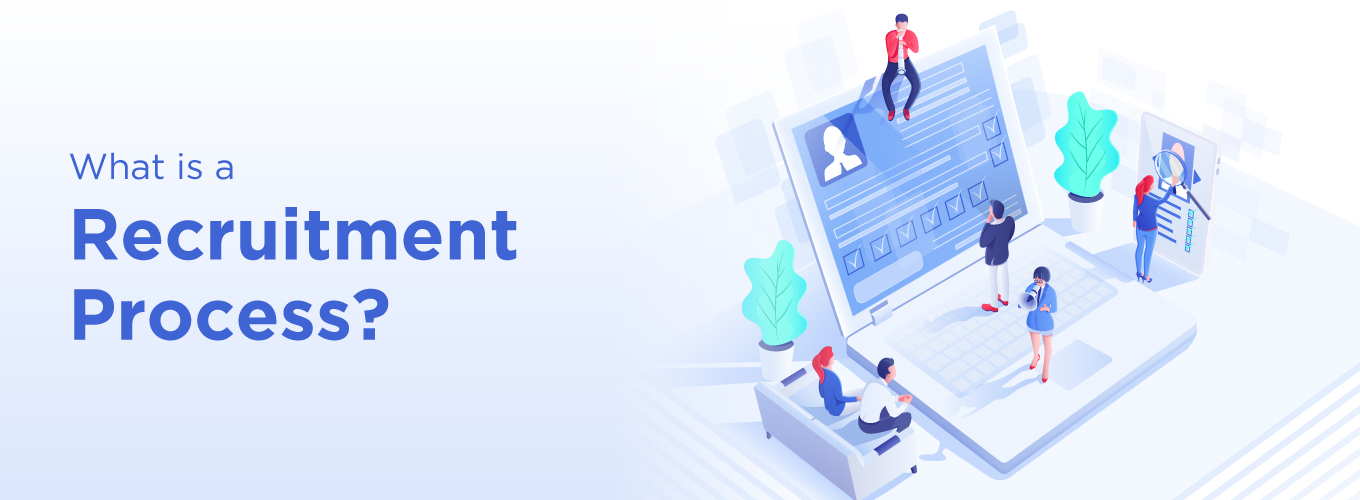What is a Recruitment Process
A sound business strategy
Let’s get to the crux of the matter. When an employee leaves a company, they don’t just leave a position vacant. They cause a dent on the company’s bottom-line. Studies have shown that replacing an employee costs a company at least six to nine months of that person’s cost-to-company.
So, attracting, onboarding and retaining talented employees is a sound business strategy. It has a positive impact on the bottom-line. And it helps build and protect the organization’s culture.
For this strategy to bear fruit, the company must have a good, robust, well-oiled, recruitment process.
Understanding the recruitment process
The recruitment process is simple. It basically entails finding the right candidate, with the relevant qualifications, experience, skills and attitude for the job. This process is owned, led and delivered by members of a company’s human resources (HR) team.
As good recruitment saves a company costs, improves efficiency and grows its profitability, the HR team must take great care to keep their recruitment process sharp, agile and accountable.
An efficient recruitment process does not just fill positions and manage headcount. It finds and onboards good candidates, who are perfect fits for a job or role, quickly.
Also Read: Technology Hiring Trends In 2022
Making the recruitment process qualitative
Automate the process
A significant part of process automation is achieved in recruitment when you have an efficient applicant tracking system. This helps in posting job listings, screening applicants, tracking patterns and picking out qualifying resumes very efficiently. The time you save through this automation can be invested in reviewing potential candidates and in building strong relationships with them.
Make your decisions data-driven
Have a data analytics system in place that will help you mine and use applicant data meaningfully. How many people applied for different positions, what are their backgrounds, their qualifications, their work experience; where do they come from – all this information, and more, today can offer you great insight into how your company is faring in the job market. You can build better recruitment and talent management strategies using this information.
Become an employer brand
When you review and reflect on the data you have gathered you can work on enhancing your image as an employer of choice. Employer branding is critical in today’s world. Work on strategies to showcase your workplace and its culture. Have employees share experiences on social media, of how they feel valued at your company. When the employer brand ratings are high, a well-managed recruitment process delivers faster and qualitative results.
Launch a buddy program internally
Satisfied employees are your best advertisers. They can influence people in their circle to consider joining your company. Studies have proven that employees have ten times more access to potential candidates than HR teams. So, launch an exciting employee referral, or buddy, program. Ask employees to recommend your company to their friends and family. A good buddy program also consists of a generous reward scheme. The rewards act as an incentive for employees to refer people to join the company.
Also Read: Which is Better in 2022? WFH Or WFO
The benefits of a good recruitment process
There are many intangible benefits of efficient recruiting. But there are three key benefits that stand out:
- An efficient recruitment process significantly reduces the cost-per-hire. This enhances profitability.
- When your recruitment process moves swiftly, with focus and empathy, the quality of talent you are able to attract and recruit goes up significantly. When the process drags on, and moves slowly, talented, qualitative, candidates lose interest and walk away. So, a good recruitment process moves fast and helps attract and recruit quality talent.
- An efficient recruitment process reduces the time invested in doing fire-fighting recruiting. When the process works seamlessly and onboards good, talented, people, the HR team can focus on learning and development programs. This nurtures the career and personal growth plans of employees. This, in turn, makes them work better, increasing productivity and growing the company’s profitability.
Outlining the steps in the recruitment process
Efficient recruitment is all about good planning, sound execution and continuous improvement. These steps make up a good recruitment process:
- Have a recruitment plan: Build this plan, outlining the key recruitment needs of your company, along with the heads of your business units and with your HR team.
- Define jobs and roles clearly: Make sure every role that you are looking to fill has a detailed job description. Recruitment is simpler when you are clear about who you are looking for, about what role they will play and what qualifications and skills they will bring to the table.
- Go with the top candidates: When you analyze the applicants for each job and role, rank them in order of their qualifications, their skills and their work experience. Rate them on attitude as well. And finally interview the best talent.
- Interview diligently: Make the interview process sharp. Check for technical skills. And have multiple levels of interviews. Pool in the insights of the interviewers to arrive at the final decision. Decide fast though.
- Onboarding: This goes beyond the first week’s induction. Make sure the new employee is comfortable and feels valued. The process of onboarding takes several weeks, lasting up to a quarter in some cases. During this entire period of time, let the employee know that you are available to hand-hold them.
In summary
When you are recruiting, remember that you are not just another recruiter. You are a relationship manager. You are forging a lasting relationship with a potential candidate. And you are helping them forge a lasting relationship with you and with your company.
It is only when you work with this outlook does a good recruitment process truly become a great one!









